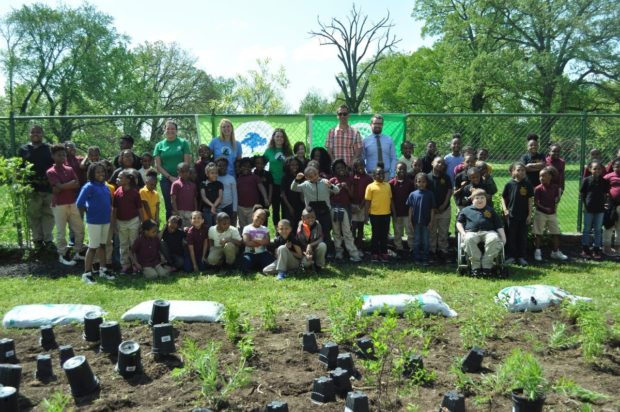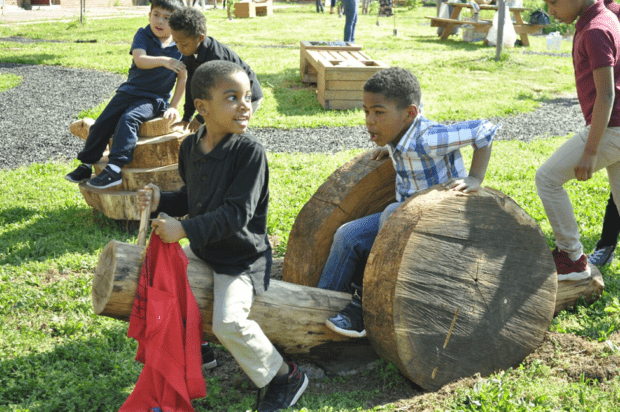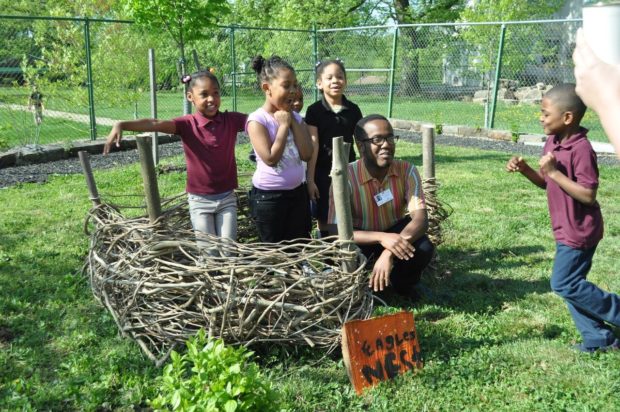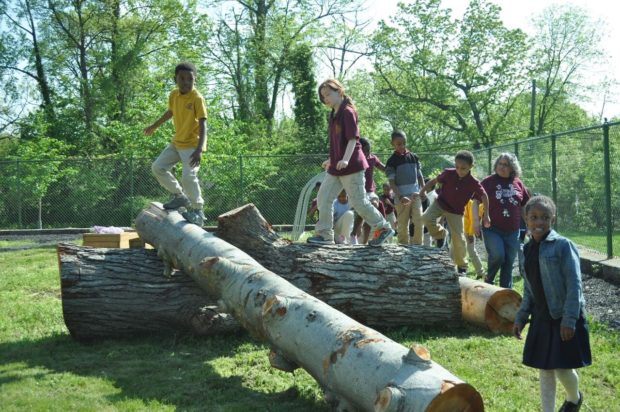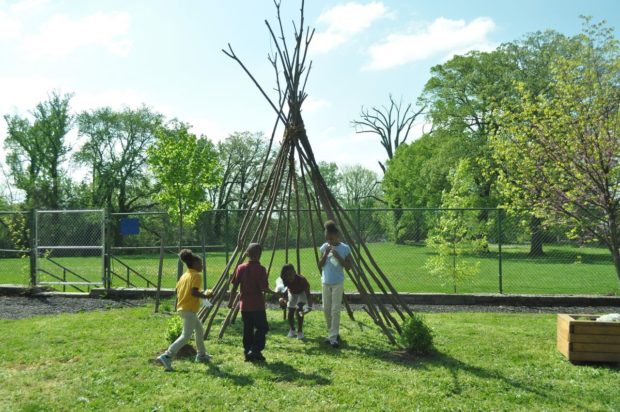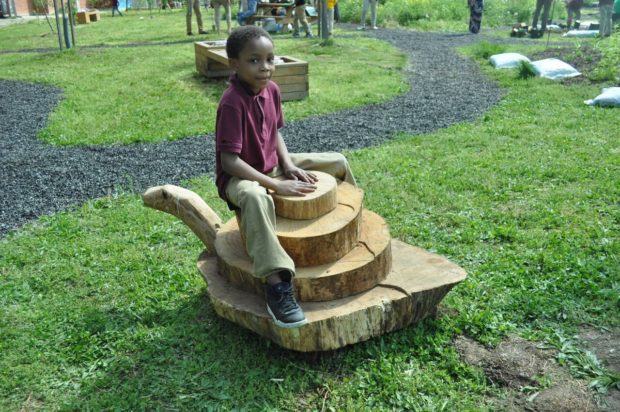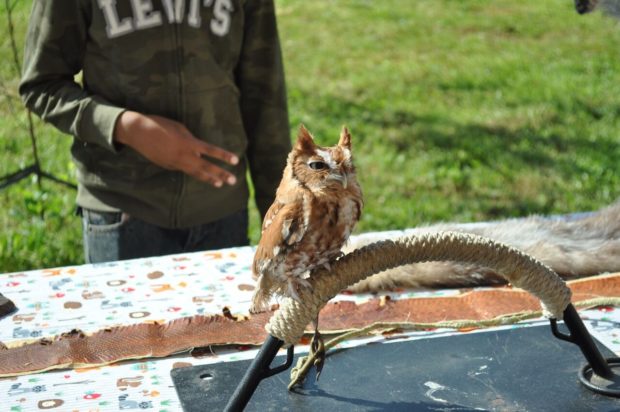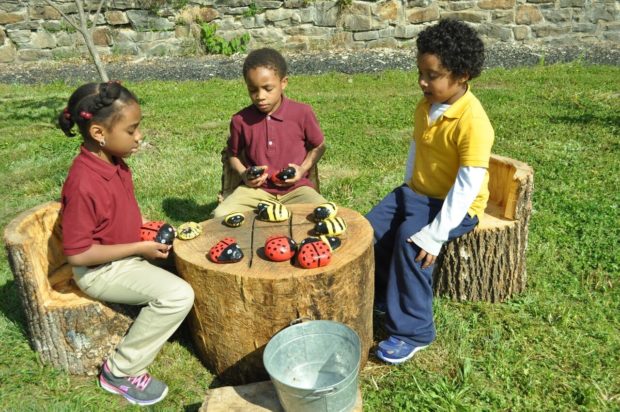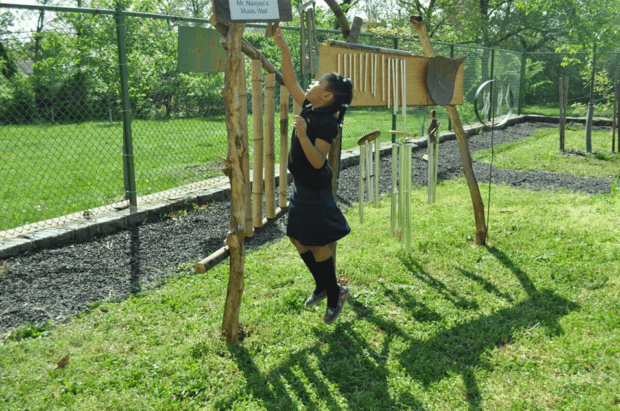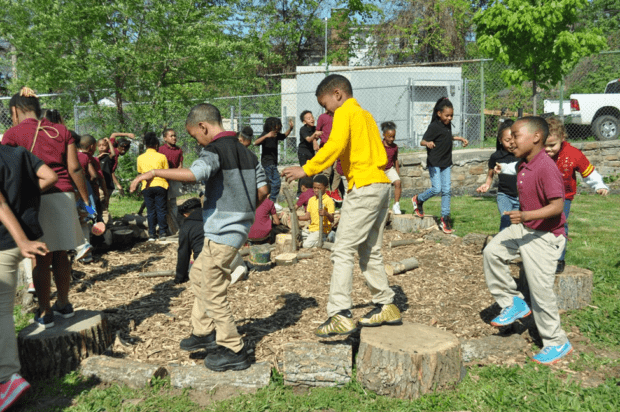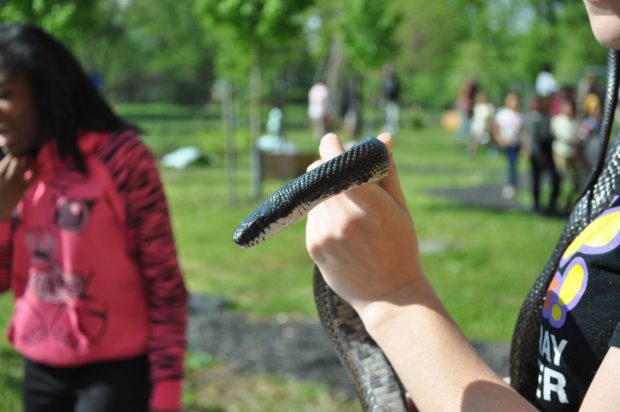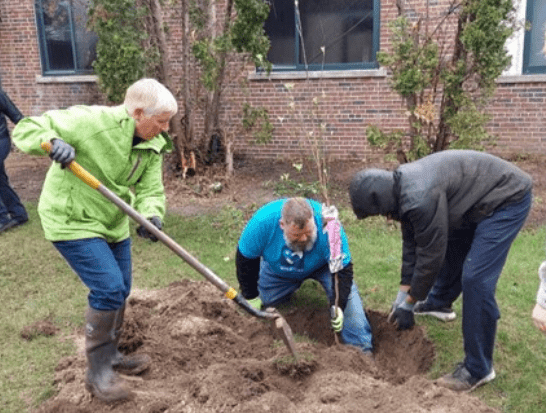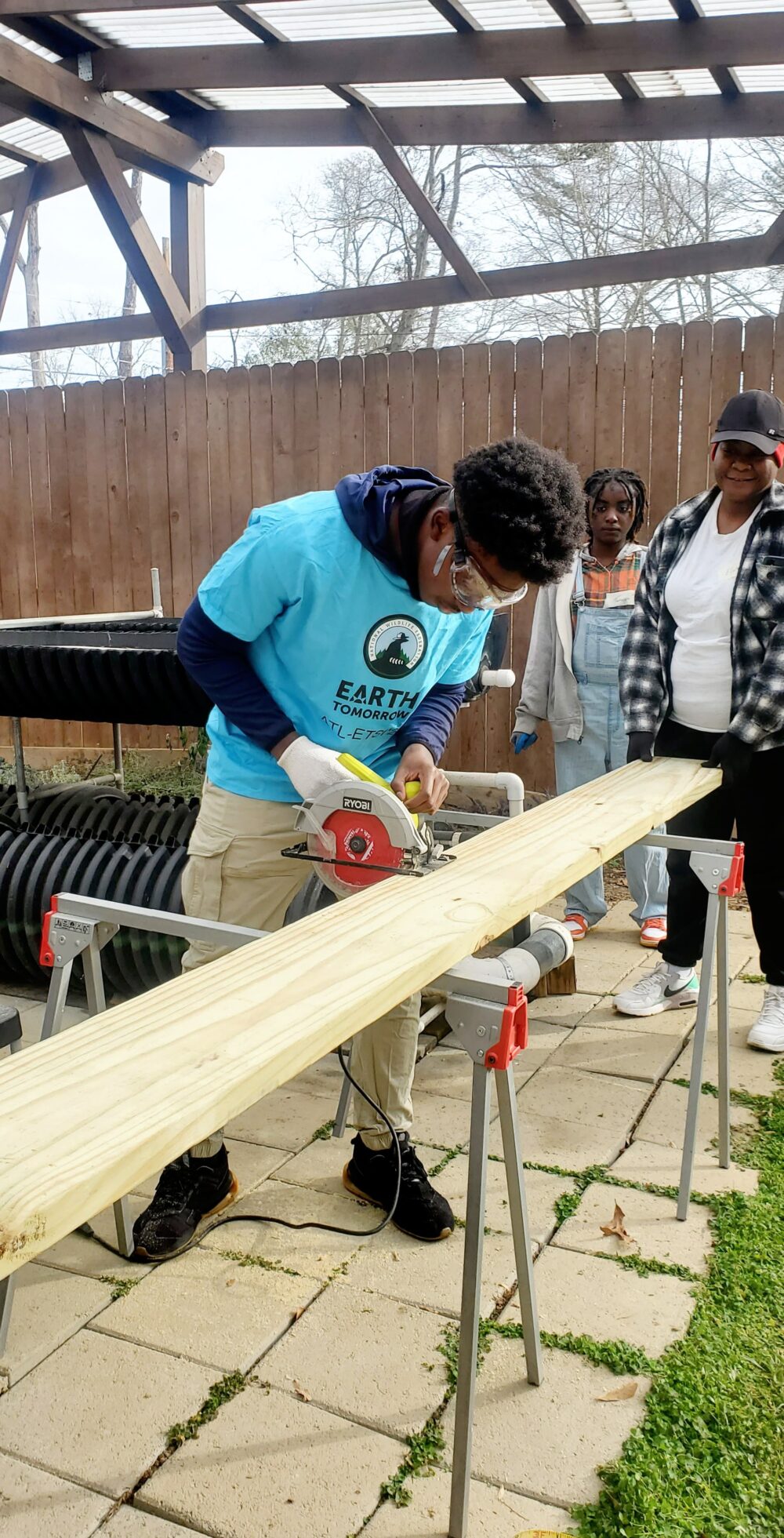We have much more to do and your continued support is needed now more than ever.
Bringing the Joy of the Forest to the City
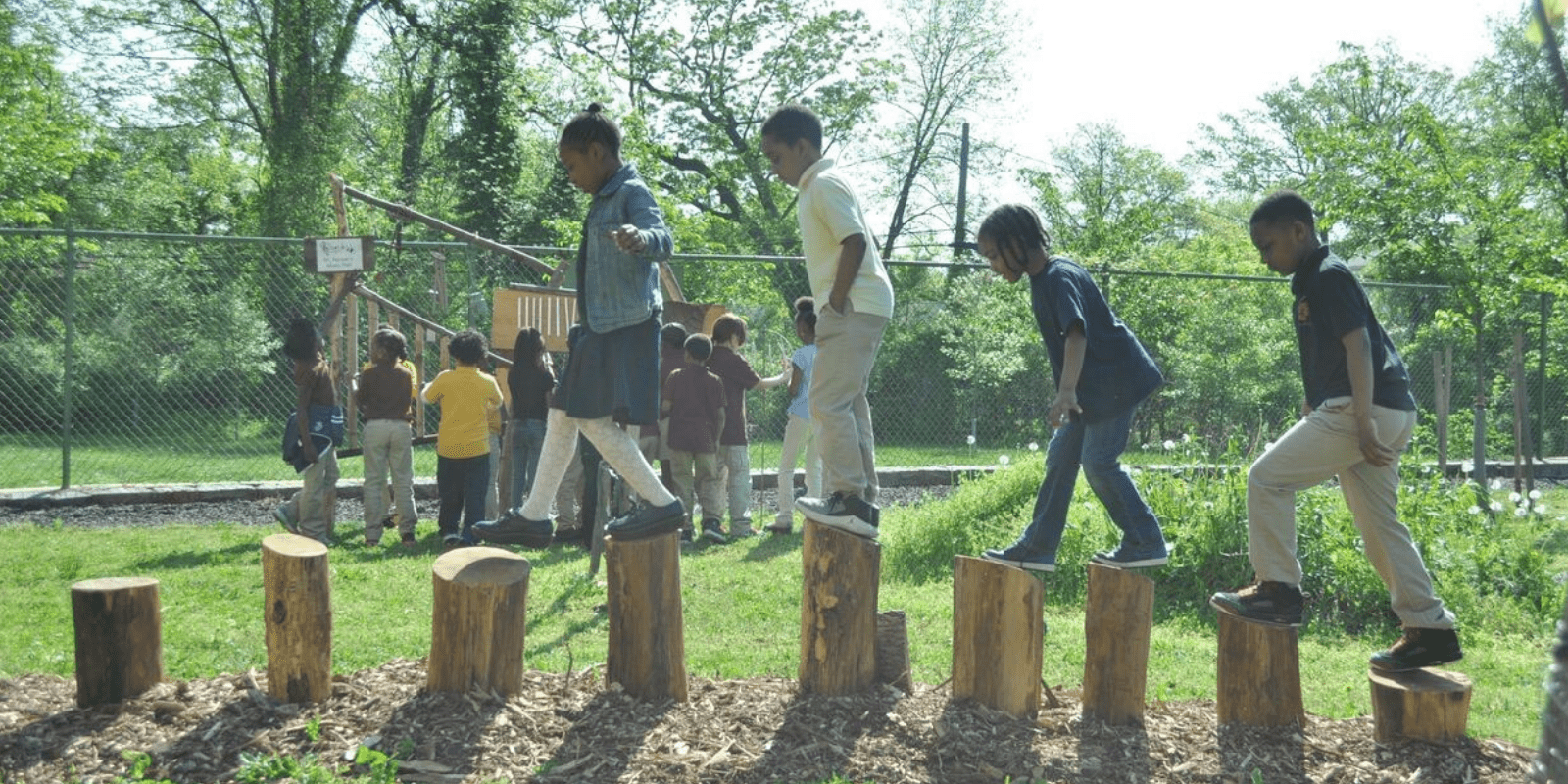
Recent child development studies have shed light on the benefits of children’s exposure to nature, and the importance that early exposure to the natural world has on creating adults who care about the earth’s well-being. At National Wildlife Federation, we are committed to addressing the disturbing trend of children spending less and less time outdoors and the resulting connection to behavioral and health problems, as well as apathy towards the dangers facing our natural world.
One of the ways we do this is by encouraging the use of Nature Play Spaces. In Baltimore City, it isn’t always easy for parents to get kids into natural environments, or to give them the opportunity to explore green spaces and forests. Children often miss out on experiences like climbing on stumps, examining the undersides of overturned logs, and building forts out of fallen branches. Nature Play Spaces, also known as Nature Exploration Areas, are gaining traction as possible solutions for children growing up in the city. These spaces are composed of playground elements like balance beams, climbing features, imagination areas, and music walls, all made from natural elements and set up to emphasize a connectivity between the child and nature.

While many standard Nature Play Spaces can be found outside of nature centers and near trail heads, a new age of urban nature play is emerging. By integrating natural elements into Baltimore City school grounds, Natural Play Spaces can provide access to students who otherwise might not be exploring nature preserves, parks, or other outdoor nature areas.
The National Wildlife Federation Mid-Atlantic Regional Center partnered with Windsor Hills Elementary Middle School in Baltimore to create an innovative, collaboratively planned Nature Play Space for their school yard. The school was eager to hear about all the positive benefits nature play can have for student learning and behavior, and was excited to have their students help in the planning and construction process, every step of the way.
Students were given a presentation on the concept of nature play and the types of elements that could be built in their schoolyard. They voted on their favorite features and drew anything they could imagine for their “Dream School Yard.” Students had a chance to talk about the project and weigh in on the project’s design and implementation. After the elements were selected, the sixth grade environmental team used maps of the area and paper cutouts of elements to design the layout of the play area. This input from the students and community was crucial to fostering a sense of ownership and excitement around the installation.
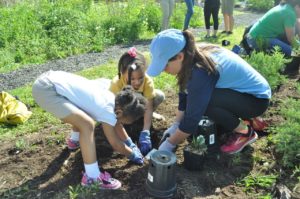
In May 2018, after months of research, collaboration, preparation, and assembly, the Nature Play Space was ready to be unveiled. With the help of partners including Chesapeake Bay Trust, Chesapeake Bay Conservation Corps, Maryland Department of Natural Resources, Baltimore City Parks and Recreation, Maryland Association for Environmental Outdoor Education (MAEOE), Carrie Murray Nature Center, and Baltimore Outward Bound, everything came together. The dedication ceremony opened the area up to all the students and teachers and included a host of live animals, tasty snacks, and a presentation of the Eco-Schools Green Flag Award. The students enthusiastically explored their updated school yard.
The inherent appreciation of the natural world and the basic instinct of childlike exploration was immediately visible in the eyes of the students. Students walked along the paths on a tour, itching with energy until they were finally released to play. They immediately started creatively interacting with all of the natural play elements, finding new ways to explore. They built towers and pretend campfires in the loose parts creative area; they ran in and out between the poles of the tipi; they led imaginary crusades riding on the giant wooden snail and turtle elements. The students practiced motor skills and balance, leaping from stump to stump and climbing the giant logs that had been brought in via crane by Baltimore City Parks and Recreation. The wonder that showed on their faces as they ran from feature to feature, the joyful sounds that pierced the air, and the excitement students had for gardening for pollinators demonstrated the positive impact that exposure to our natural world can have.
To learn about other ways National Wildlife Federation is connecting the next generation with nature visit our website at https://www.nwf.org/en/Educational-Resources/Education-Programs.

